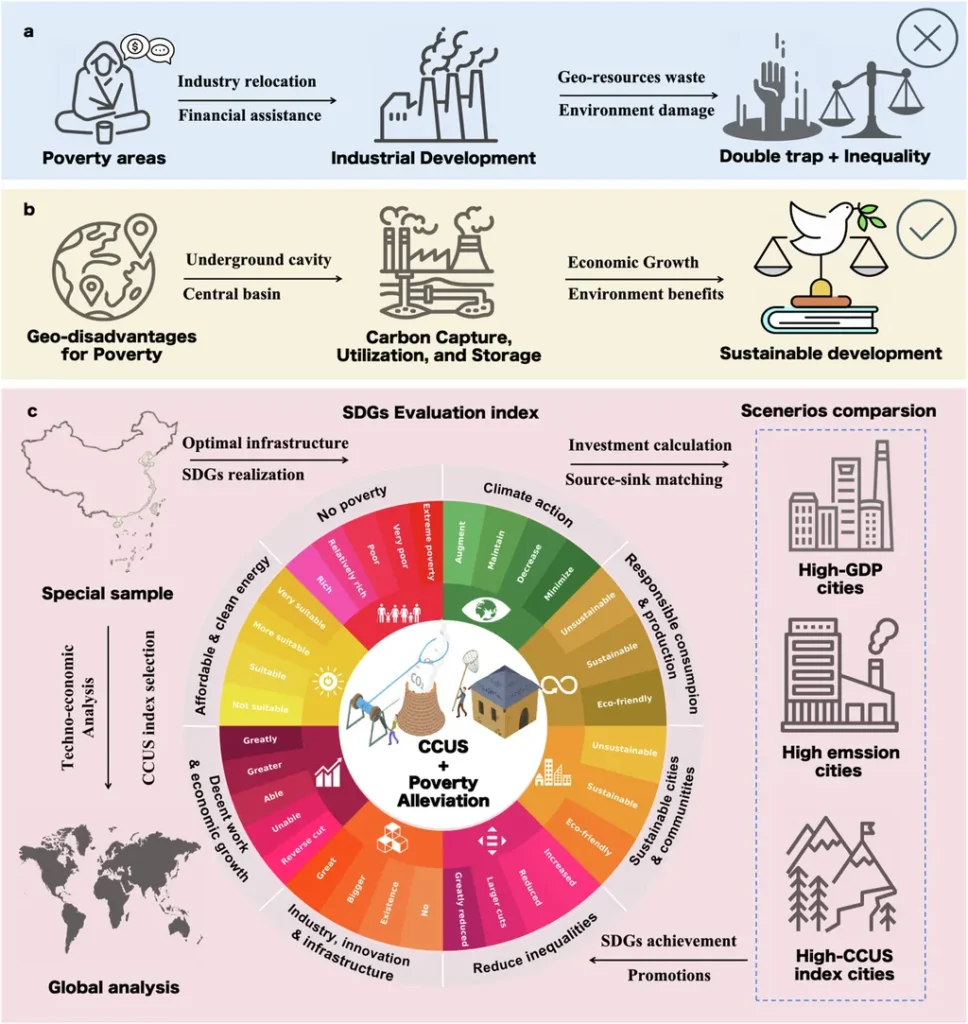In the face of escalating global climate concerns, a recent study published in the *Journal of the China Coal Society* offers a comprehensive look at the advancements and challenges of Carbon Capture, Utilization, and Storage (CCUS) technology. Led by Yinan Zhang from the MOE Key Laboratory of Thermo-Fluid Science and Engineering at Xi’an Jiaotong University, the research delves into the critical role CCUS could play in mitigating carbon emissions, particularly in fossil fuel-dependent industries.
The study highlights the urgent need for effective carbon reduction strategies to meet the Paris Agreement’s temperature control targets. “CCUS technology has become one of the key pathways to reduce carbon emissions,” Zhang emphasizes, underscoring the importance of this technology in the current energy landscape.
The research provides an in-depth analysis of various CO2 capture technologies, including chemical absorption, physical absorption, adsorption, membrane separation, and low-temperature distillation. Each method is evaluated for its advantages and limitations, offering a nuanced understanding of the current state of CO2 capture technology.
Beyond capture, the study explores the diverse applications of CO2 utilization and storage. “Various CO2 utilization and storage technologies, including CO2 physical utilization, CO2 biological utilization, CO2 geological utilization/storage, and CO2 chemical utilization, were introduced in detail,” Zhang notes. The research highlights the potential of CO2 mineralization utilization/storage technology, which not only promises efficient and safe permanent CO2 storage but also transforms alkaline solid waste into valuable raw materials for the construction industry.
The study also examines the current status of CCUS projects in China, focusing on industries such as thermal power, coal chemical, petrochemical, metallurgy, and building materials. Despite the widespread application of CCUS technology in China, the research identifies persistent challenges, including high costs and technological immaturity. “It is particularly important to strengthen research and development of CCUS technology and promote the construction of CCUS full-chain projects in industries that use fossil fuels,” Zhang asserts.
Looking ahead, the study suggests that developing efficient, low-energy-consuming, non-toxic, and non-corrosive capture solvents and systems will be central to the future of CO2 capture technology. For CO2 utilization/storage technology, producing high value-added chemical products and ensuring the safe and permanent storage of CO2 are identified as key development directions.
The research concludes that CO2 mineralization utilization/storage technology stands out due to its efficiency and reliability. This technology not only addresses the supply-demand mismatch between CO2 emission sites and consumption sites but also offers significant environmental and economic benefits. As China continues to adjust its energy structure, the implementation of full-chain CCUS projects, particularly those leveraging CO2 mineralization utilization/storage technology, will be crucial for achieving effective carbon sequestration.
This study provides a roadmap for the future of CCUS technology, offering valuable insights for policymakers, industry leaders, and researchers. As the energy sector grapples with the challenges of reducing carbon emissions, the findings of this research could shape the development of more efficient and sustainable carbon management strategies.

